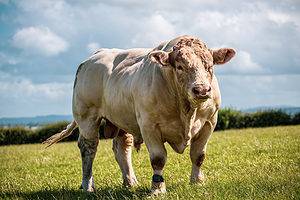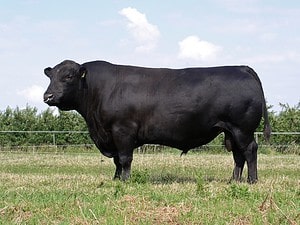Every year, around 20 people are fatally struck by lightning in the United States. However, many more cows around the world are killed by lightning annually. How often does lightning kill cows? It’s more than you think!
How Often Does Lightning Kill Cows Every Year?
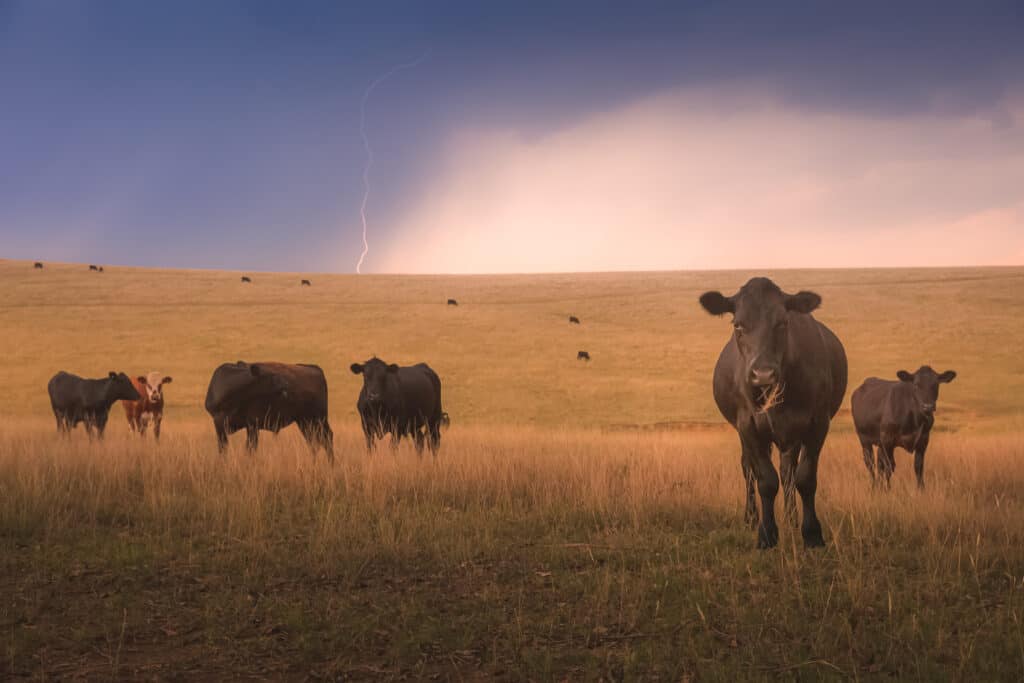
Approximately 100 thousand cows die annually due to lightning strikes.
©Stephen Bridger/Shutterstock.com
Around 100,000 cows die every year as a direct result of a lightning strike. When groups of cows die by lightning, ten to thirty cows are usually killed at a time. However, 68 heads of cattle have died over one lightning strike.
Since plenty of cattle die per year during thunderstorms, cattle ranchers can buy insurance against deaths caused by lightning strikes. Any insured cow kept for commercial purposes that dies by lightning should immediately be checked by a veterinarian. A vet report specifying the cause of death is necessary when filing a claim.
Why Does Lightning Strike People and Animals?
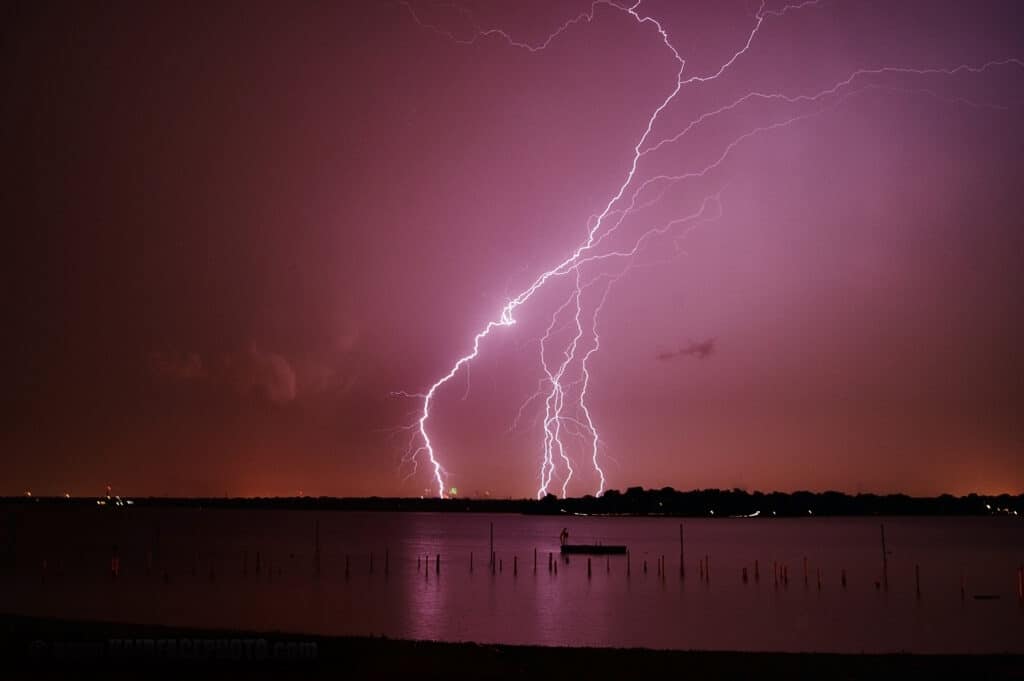
The tallest things in the area are usually struck by lightning.
©iStock.com/HairFacePhoto
Lightning strikes animals or people because they are the tallest thing in the area, or they are near the tallest thing in the affected environment. When conditions are right, clouds become negatively charged while the ground becomes positively charged.
When the charges build up and get close enough, electricity travels in a current to neutralize the charges. This massive electrical current is lightning. Anything on the ground can become positively charged during a thunderstorm including people and animals.
While direct lightning strikes kill people and animals, ground currents from lightning strikes are often what cause death in a thunderstorm. Lightning can also travel good distances along objects like fences which has the potential to kill many living things at once.
Why Are Cows Killed by Lightning?
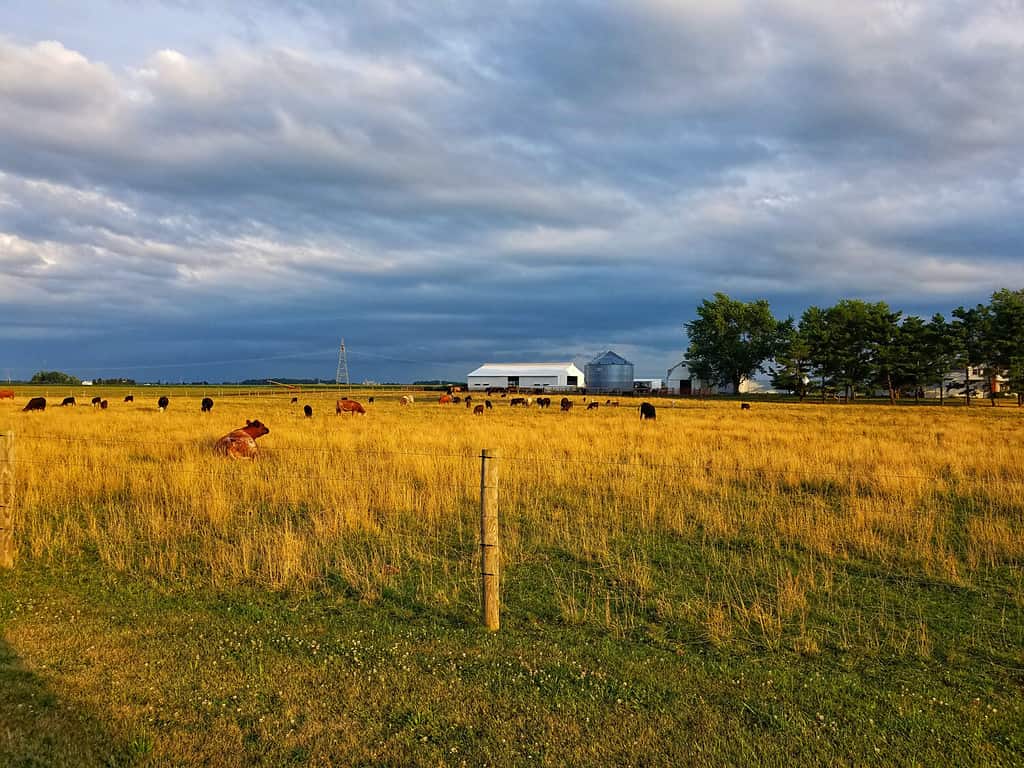
Cows are often the tallest thing around in open fields which makes them vulnerable to lightning strikes.
©Elizabeth Gossman/Shutterstock.com
During bad weather, cows huddle under trees or other objects and buildings for shelter from the elements. If a herd of cattle huddles under one tree, and the tree is struck by lightning, all of the nearby cattle may die from the strike. Similarly, if a herd of cows stands next to a fence during a storm, that fence is capable of transmitting a deadly amount of electricity over a long distance.
If the field that cows are in is wide open, the cows themselves are the tallest thing in the area which makes them an easy target for lightning strikes. Also, scared cows huddle together in open fields. As a result, if a cow in a huddled group in an open field is struck by lightning, chances are high that the surrounding cows will also be affected.
Unlike other animals like horses, cows do not seek out a barn or other structure designed for animals during a storm. This means that they are at a higher risk of lightning strikes because they are out in the open at the height of bad weather.
Cows also have legs that are spread far apart. As a result, ground currents a cow encounters easily travel through the animal’s body. The electricity goes up one leg, through their vital organs, and exits through another leg.
What Happens to Cattle Bodies When Lightning Strikes?
If a cow is directly struck by lightning and isn’t killed by a ground current, there are telltale signs. The outer shell of a hoof, which is called the hoof capsule, can explode. If the cattle have horns, the shells on those horns can also be blown off.
Direct hits by lightning sometimes cause burned flesh. If burn marks aren’t visible, they may smell burnt as their hair is most likely singed. Sometimes, the affected cows ooze blood from their nostrils, eyes, and anus.
Cows struck by lightning don’t see the danger coming. Because of this, they’ll have cud or grass in their mouths as they were chewing away at the moment of death.
What Animal Is Struck by Lightning the Most?
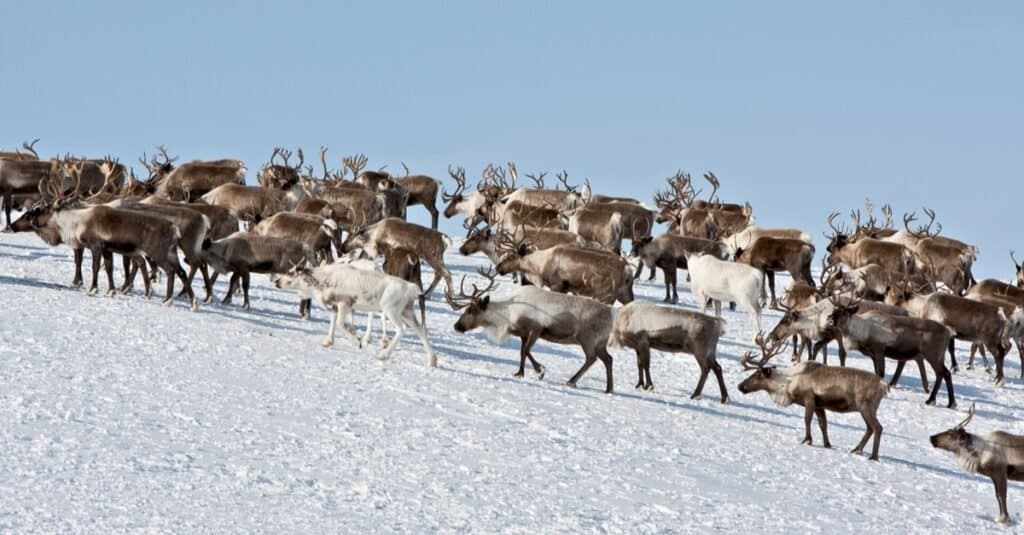
Large herds of
caribou
have died by lightning.
©Sergey Krasnoshchokov/Shutterstock.com
There is not enough scientific data available to determine what animal is struck by lightning the most. However, elephants and deer are common victims of lightning strikes as they sometimes congregate near water during a storm. Despite this, herding commercial livestock is the most commonly recorded death.
Other herding wild animals like caribou are also known to die en masse during a thunderstorm. In 2016, over 320 reindeer were killed by one strike in Norway.
It is commonly believed that giraffes are struck by lightning the most out of any animal on the planet. However, there are only a few documented cases of giraffe strikes. The most publicized case was in 2003 when a giraffe at Disney World in Florida was struck by lightning in front of park visitors.
Sheep sometimes die in huge groups when lightning strikes. Over 800 have died at one time over one strike. There are well-documented cases of large groups of horses, sheep, pigs, buffalo, and cows dying as a result of a single lightning strike.
What Person Has Survived the Most Lightning Strikes?
A man named Roy Sullivan holds the Guinness World Record for the most lightning strikes. He was hit by lightning 7 times before he died by suicide in 1983 at 71 years old.
His first run-in with lightning happened in 1942. He was in a lookout tower during a thunderstorm, and the tower was repeatedly struck by lightning. As he fled, he was struck directly with the current blowing a hole through his shoe and knocking off his toenail.
In 1969, he was struck by lightning for a second time. Lightning that hit a tree entered the truck he was driving which rendered Roy unconscious. His eyelashes and eyebrows were burned off, and his head hair caught on fire.
While in his front yard in 1970, he was struck by lightning for a third time. It hit his left shoulder.
His fourth strike occurred in 1972 and it again set his hair on fire. This strike affected him psychologically, and he started to believe that he was attracting lightning. He started carrying water everywhere with him.
In 1973, his fifth strike occurred. It didn’t render him unconscious, but it again blew off his shoe and caught his hair on fire. He was able to extinguish the flames with the water he carried with him for this specific purpose.
His sixth strike occurred on June 5, 1976. The bolt affected his ankle and again caught his hair on fire.
His seventh and final strike occurred on June 25, 1977. He was trout fishing when he was hit. While his hair was still on fire, a bear attacked his fishing line and tried to take his fish.
Thank you for reading! Have some feedback for us? Contact the AZ Animals editorial team.





